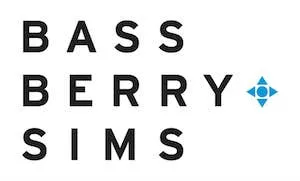- with readers working within the Technology and Construction & Engineering industries
- within Coronavirus (COVID-19) topic(s)
On June 2, the Small Business Administration's (SBA) Office of Hearing and Appeals (OHA) denied a size appeal filed by Veteran Elevator Solutions, LLC (VES) challenging the size of Bass, Berry & Sims' client GD Resources, LLC (GD Resources). This decision demonstrates the application of the 2023 "safe-harbor" addition to the ostensible subcontractor rule as previously discussed in an earlier blog post.
Additionally, in dicta, the decision suggested a new analysis of the ostensible subcontractor rule—considering a material post-award change as a final proposal revision for purposes of the date to determine size.
The Quotation and Award
On August 9, 2024, the U.S. Department of Veterans Affairs (VA) issued a Request for Quotations for elevator preventative maintenance and repair at the Southern Arizona VA Healthcare System in Tucson, Arizona. The NAICS code assigned to the procurement was 238290, Other Building Equipment Contractors, which is a specialty trade construction NAICS code.
GD Resources submitted a quotation on August 22, 2024. In the quotation, GD Resources identified Company A as its subcontractor. The VA awarded the contract to GD Resources on September 24, 2024, and on September 30, 2024, GD Resources informed the VA of its change in subcontractor to TK Elevator.
The Size Protest
VES filed a protest challenging GD Resources' size, alleging that GD Resources was affiliated with TK Elevator under the ostensible subcontractor rule. VES stated that since GD Resources is "a program management company" and does not employ any elevator mechanics, GD Resources would unduly rely on TK Elevator to perform the contract.
The Area Office found that the date to determine size was August 22, 2024, at which time Subcontractor A was GD Resources' proposed subcontractor. Based on the breakdown of work between GD Resources and Subcontractor A, the Area Office found GD Resources was compliant with the applicable limitation on subcontracting and therefore small for the procurement.
On appeal, VES contended the Area Office erred in the following ways:
- Considering Company A to be the subcontractor rather than TK Elevator.
- Finding that GD Resources complied with the limitation on subcontracting.
OHA Decision
While GD Resources submitted its proposal with pricing on August 22 with Company A as its subcontractor, OHA determined the September 30 post-award change in subcontractor to TK Elevator was a significant revision that resulted in a change in the date to determine size to September 30. However, OHA ultimately held the Area Office's error in the date to determine size would not have altered the outcome of the case because GD Resources was not in violation of the ostensible subcontractor rule regardless of the subcontractor.
The Safe Harbor Provision
OHA still found GD Resources small for the procurement because GD Resources met the applicable limitation on subcontracting. Here, the applicable limitation on subcontracting required GD Resources to subcontract no more than 75% of the total prime contract value. After reviewing GD Resources' workshare breakdown with TK Elevator, OHA determined GD Resources was not in violation of the ostensible subcontractor rule based on the "safe harbor" provision.
The "safe harbor" provision, discussed in an earlier blog post, provides that a prime contractor is performing the primary and vital requirements of the contract and is not unduly reliant on their subcontractor if the prime contractor can demonstrate that it will meet the limitations on subcontracting provisions.
Looking Ahead
After the 2023 revision created the safe harbor, size protests premised on ostensible subcontractor arguments are unlikely to succeed as long as the awardee can demonstrate compliance with the limitation on subcontracting rules. That said, contractors should ensure continued compliance with the limitation on subcontracting when making material changes to their performance approach post-award given this decision finding a post-award change effectively changed the date to determine size.
The content of this article is intended to provide a general guide to the subject matter. Specialist advice should be sought about your specific circumstances.



